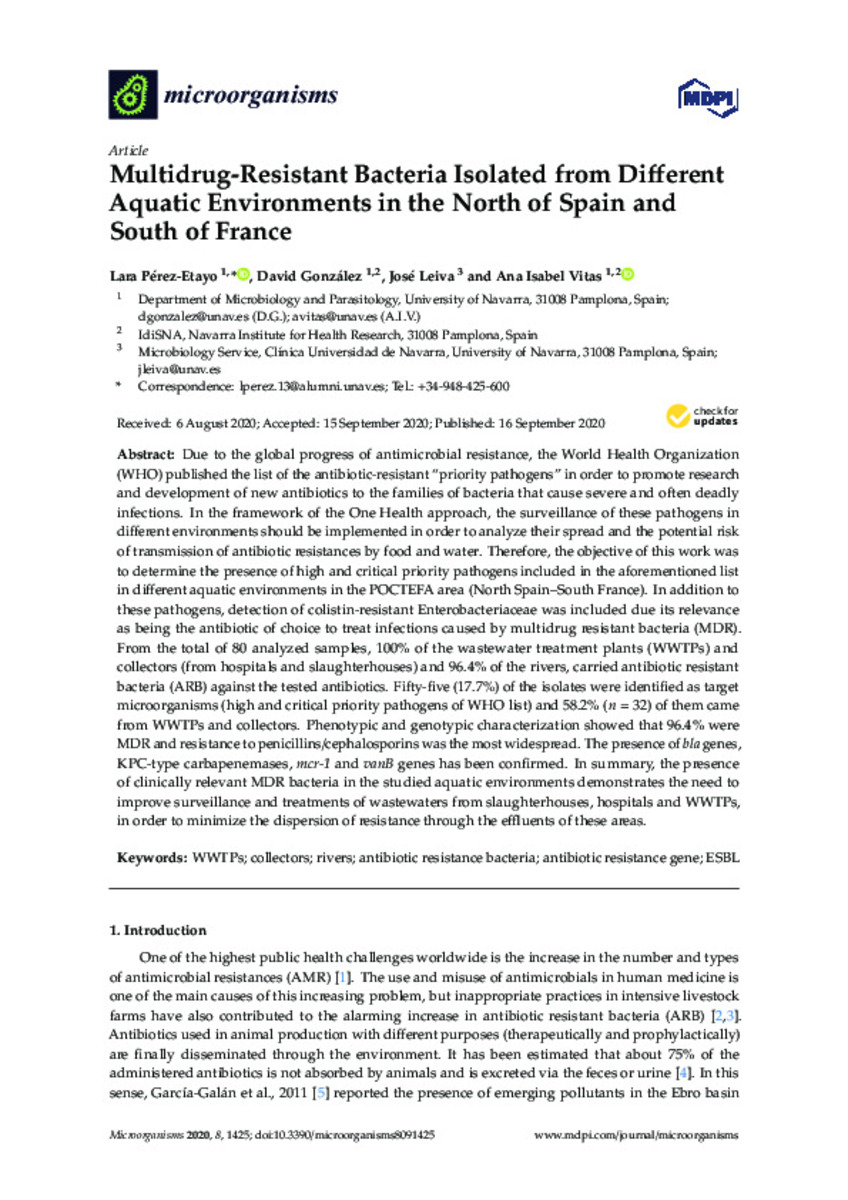Multidrug-Resistant Bacteria Isolated from Different Aquatic Environments in the North of Spain and South of France
Keywords:
WWTPs
Collectors
Rivers
Antibiotic resistance bacteria
Antibiotic resistance gene
ESBL
Note:
This article is an open access
article distributed under the terms and conditions of the Creative Commons Attribution
(CC BY) license (http://creativecommons.org/licenses/by/4.0/).
Citation:
Pérez-Etayo, L. (Lara); González, D. (David); Leiva, J. (José); et al. "Multidrug-Resistant Bacteria Isolated from Different Aquatic Environments in the North of Spain and South of France". Microorganisms. 8 (9),1425. 2020,
Statistics and impact
0 citas en

0 citas en

Items in Dadun are protected by copyright, with all rights reserved, unless otherwise indicated.







